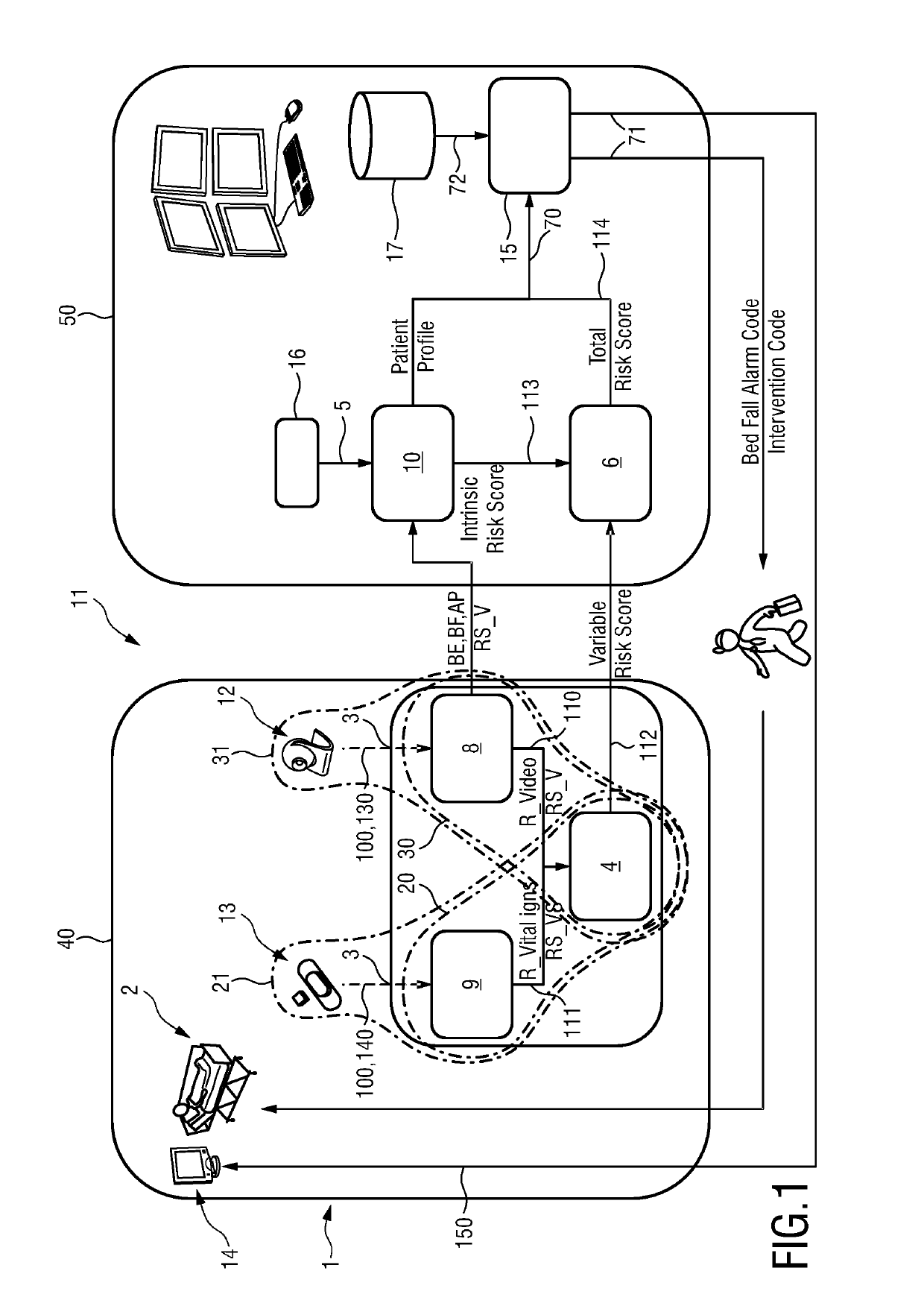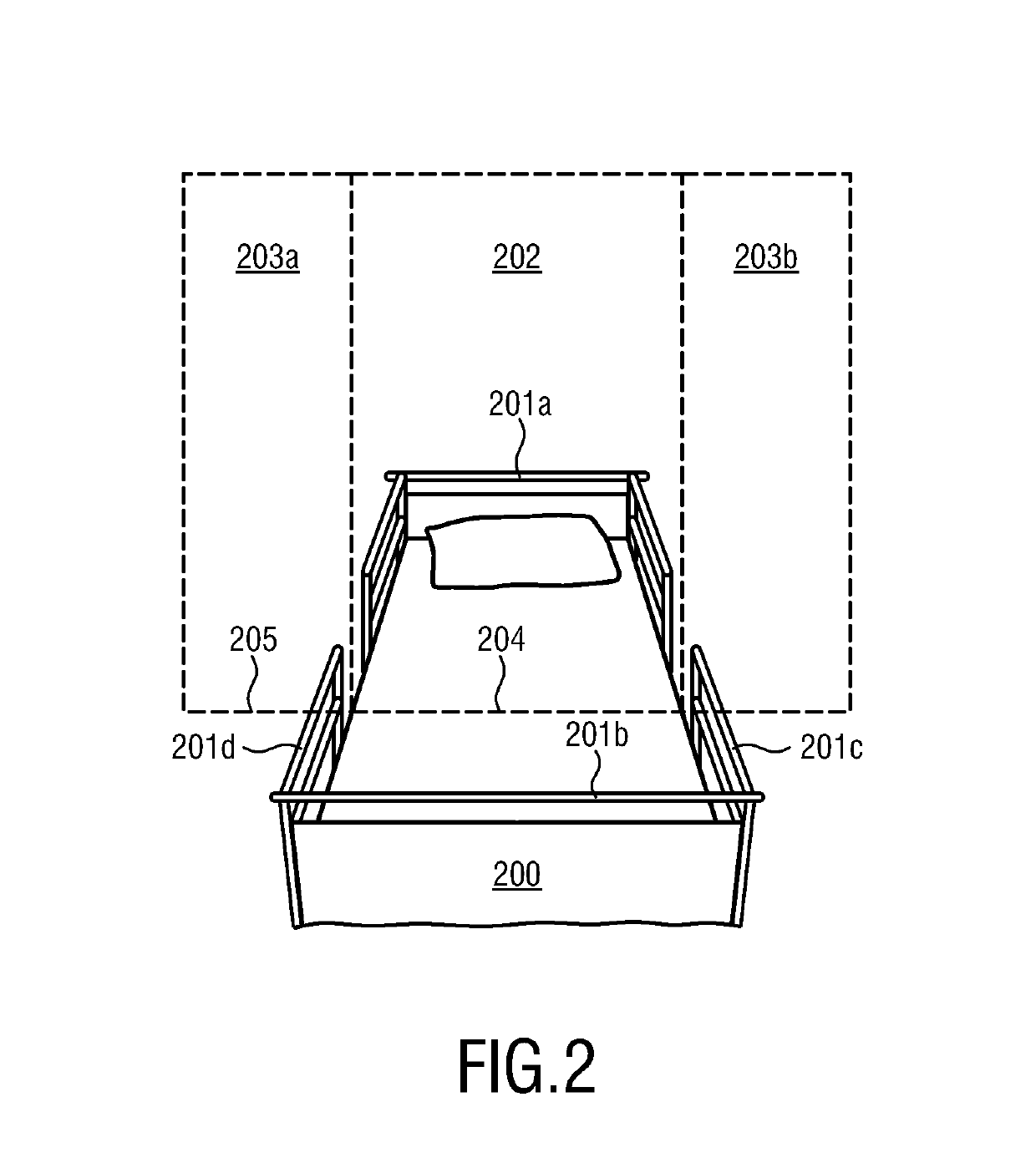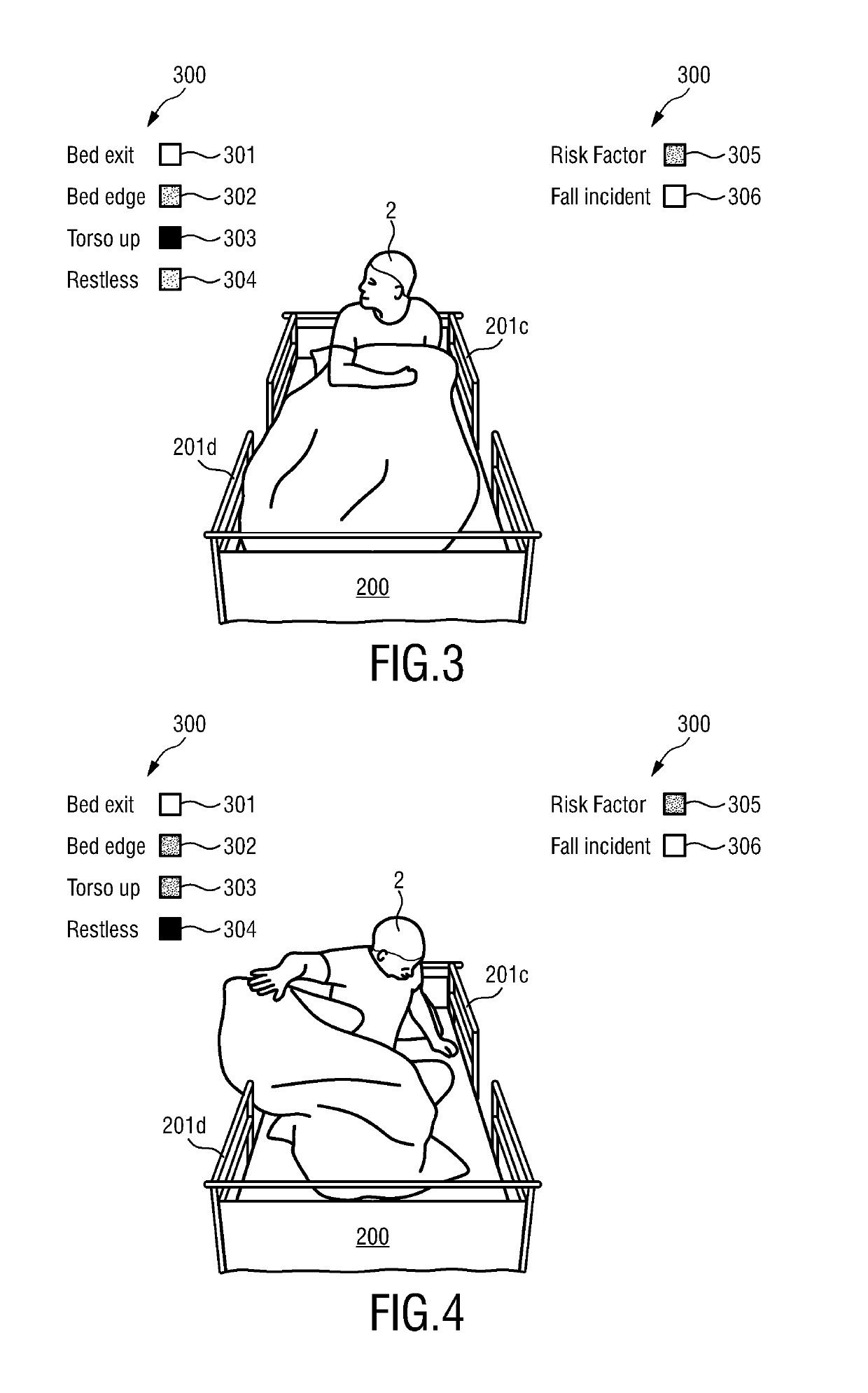Device, system and method for patient monitoring to predict and prevent bed falls
a technology for patient monitoring and bed falls, applied in medical informatics, patient-specific data, medical equipment, etc., can solve the problems of long hospital stay, significant injury in older people, and unstandardized risk factor directed interventions, so as to reduce the risk of false alarms, accurate prediction, and patient comfort
- Summary
- Abstract
- Description
- Claims
- Application Information
AI Technical Summary
Benefits of technology
Problems solved by technology
Method used
Image
Examples
Embodiment Construction
[0041]In FIG. 1, an overview of a preferred embodiment of the invention is diagrammatically shown. The embodiment comprises a device 1 for monitoring an individual 2. The individual 2 can be especially a patient in a hospital bed. In the following, the individual 2 thus will be addressed as patient 2, but the individual 2 could also be a resident of a nursing home, an occupant in a psychiatric ward, an individual 2 under home care or the like. The principle at the basis of the device 1 is that the bed fall risk associated with patients 2 under monitoring is determined both by unmodifiable risk factors such as age, certain debilitating (permanent) conditions, physical impairments etc. of the patient 2, as well as the psychologic make-up (regarding level of compliance / adherence to medical guidelines in the hospital) and modifiable risk factors such as restlessness, level of confusion, level of anxiety, type and speed of movement (e.g. erratic movements) of the patient 2 while occupyin...
PUM
 Login to View More
Login to View More Abstract
Description
Claims
Application Information
 Login to View More
Login to View More - R&D
- Intellectual Property
- Life Sciences
- Materials
- Tech Scout
- Unparalleled Data Quality
- Higher Quality Content
- 60% Fewer Hallucinations
Browse by: Latest US Patents, China's latest patents, Technical Efficacy Thesaurus, Application Domain, Technology Topic, Popular Technical Reports.
© 2025 PatSnap. All rights reserved.Legal|Privacy policy|Modern Slavery Act Transparency Statement|Sitemap|About US| Contact US: help@patsnap.com



